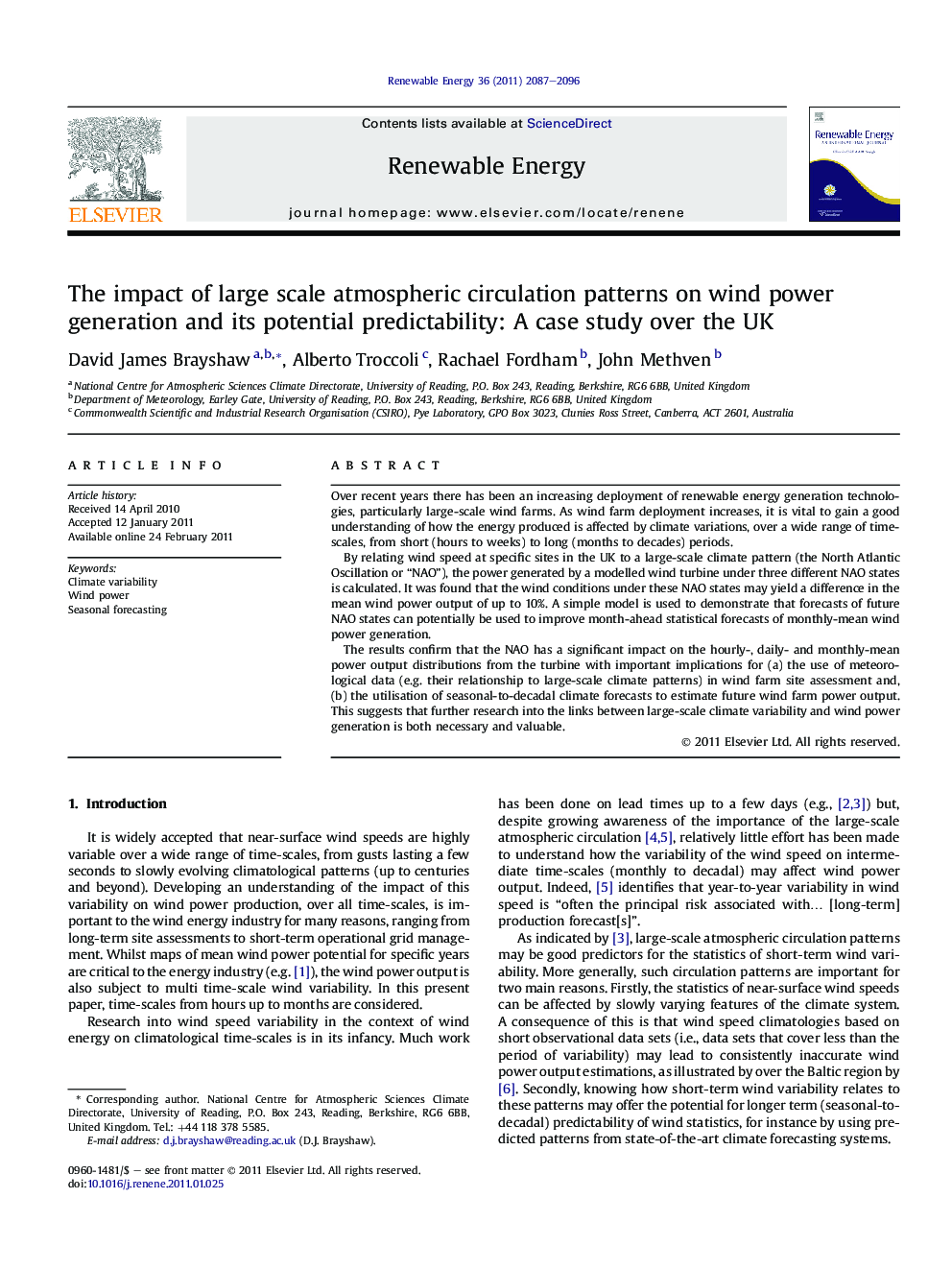| Article ID | Journal | Published Year | Pages | File Type |
|---|---|---|---|---|
| 301425 | Renewable Energy | 2011 | 10 Pages |
Over recent years there has been an increasing deployment of renewable energy generation technologies, particularly large-scale wind farms. As wind farm deployment increases, it is vital to gain a good understanding of how the energy produced is affected by climate variations, over a wide range of time-scales, from short (hours to weeks) to long (months to decades) periods.By relating wind speed at specific sites in the UK to a large-scale climate pattern (the North Atlantic Oscillation or “NAO”), the power generated by a modelled wind turbine under three different NAO states is calculated. It was found that the wind conditions under these NAO states may yield a difference in the mean wind power output of up to 10%. A simple model is used to demonstrate that forecasts of future NAO states can potentially be used to improve month-ahead statistical forecasts of monthly-mean wind power generation.The results confirm that the NAO has a significant impact on the hourly-, daily- and monthly-mean power output distributions from the turbine with important implications for (a) the use of meteorological data (e.g. their relationship to large-scale climate patterns) in wind farm site assessment and, (b) the utilisation of seasonal-to-decadal climate forecasts to estimate future wind farm power output. This suggests that further research into the links between large-scale climate variability and wind power generation is both necessary and valuable.
► Power output from wind turbines is sensitive to wind speed. ► The affect of large-scale atmospheric circulation (NAO) on UK wind is investigated. ► Slow (monthly) changes in NAO state are shown to affect turbine output by up to 10%. ► Monthly turbine power output forecasts are improved using simple NAO predictions.
